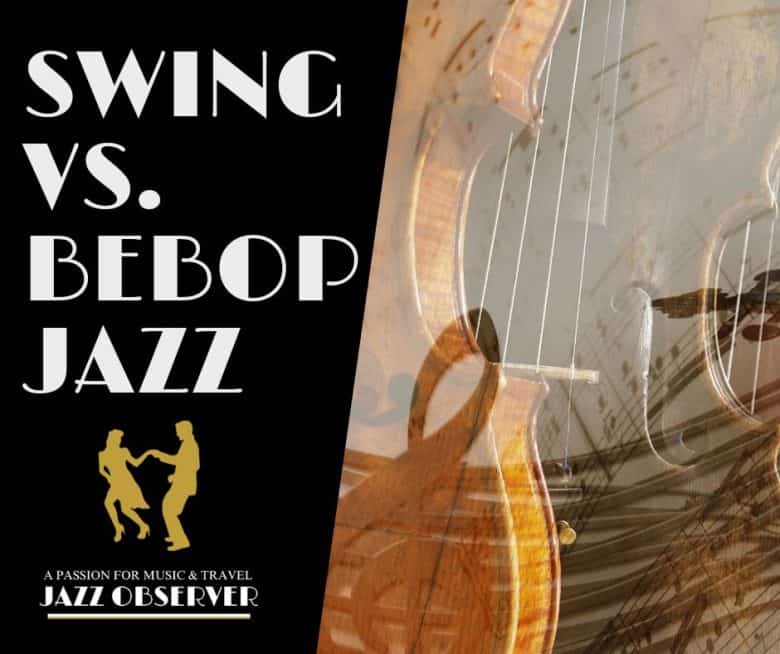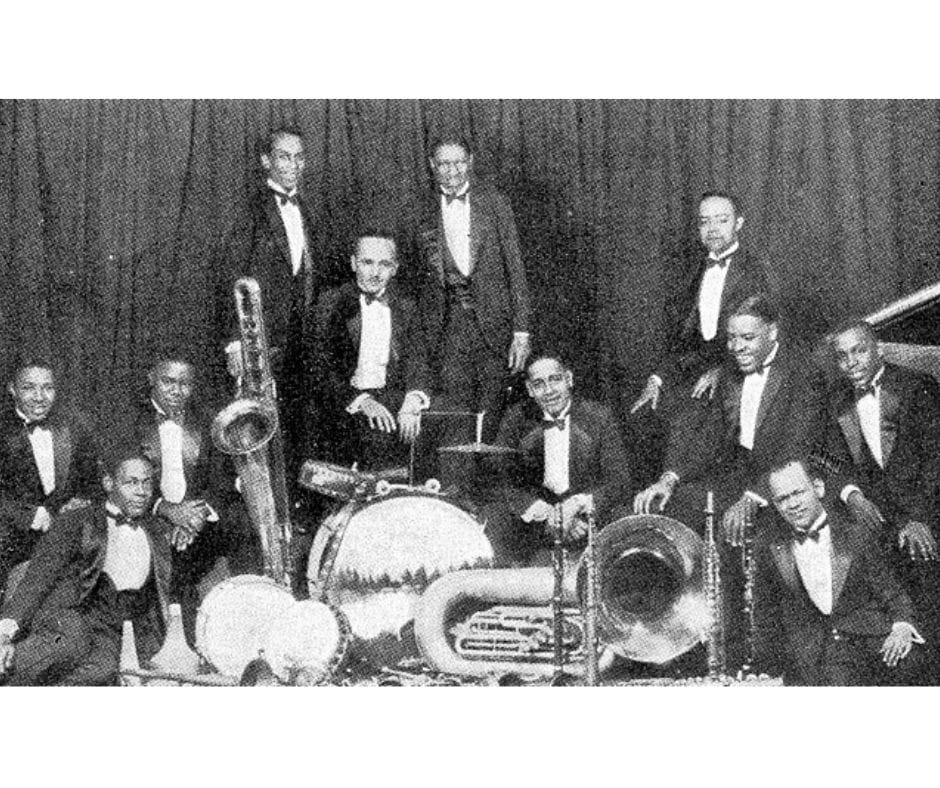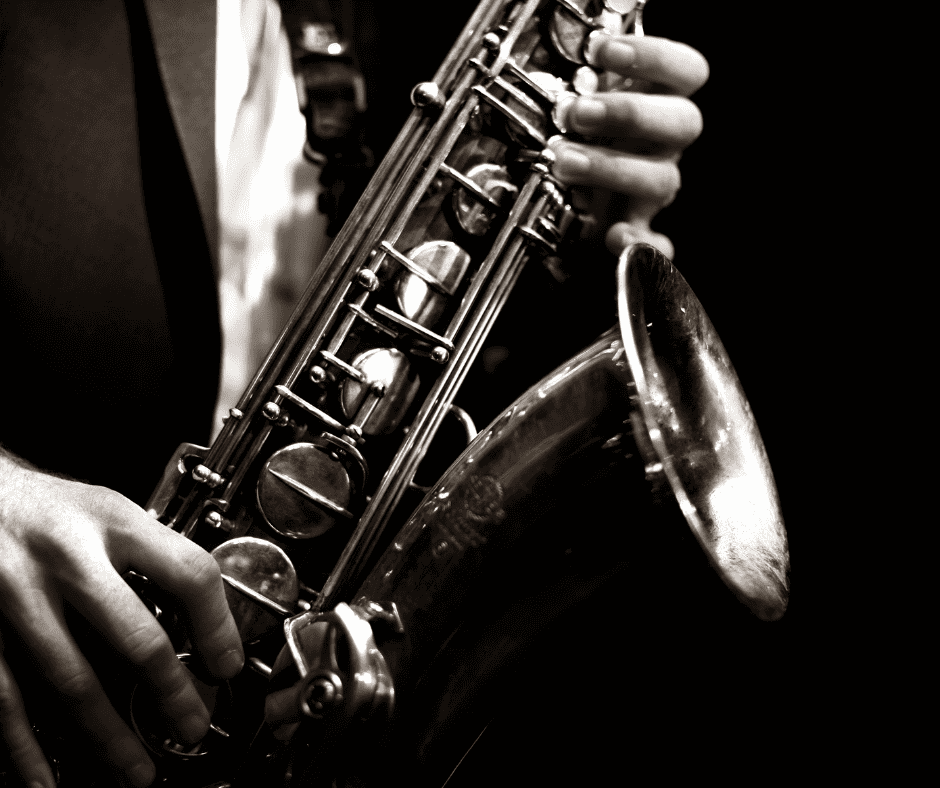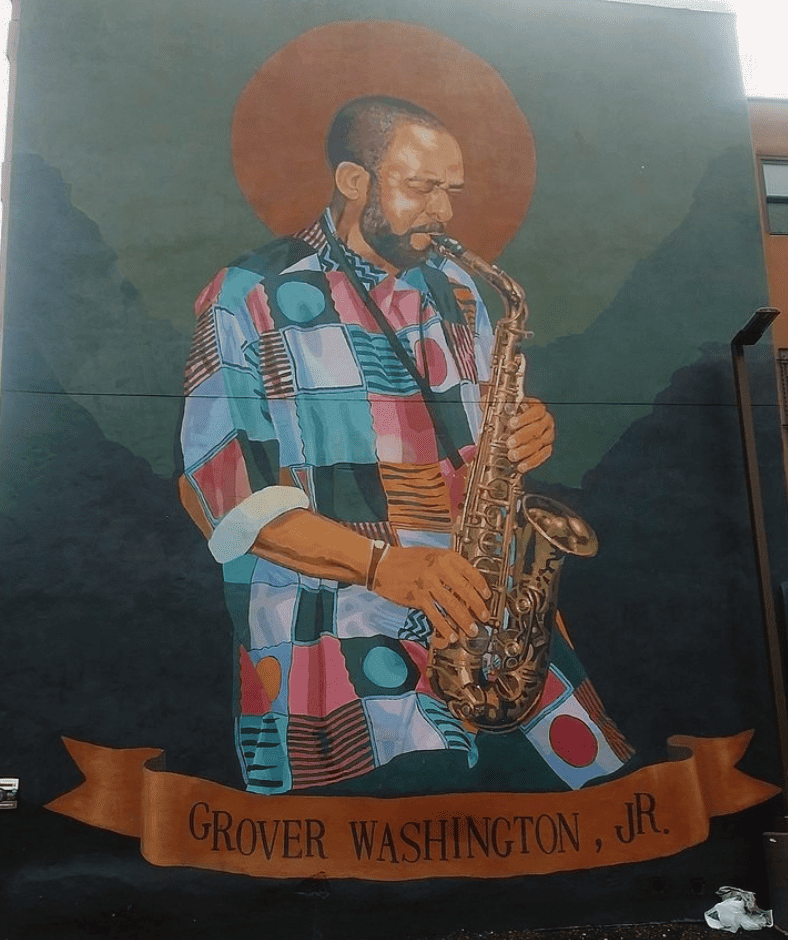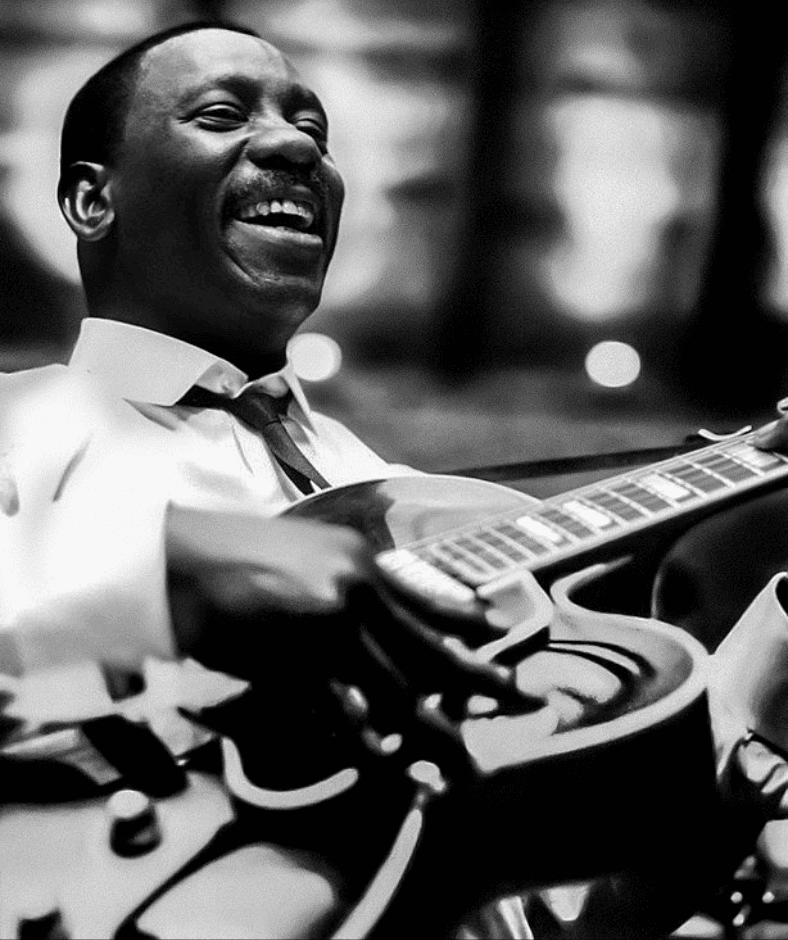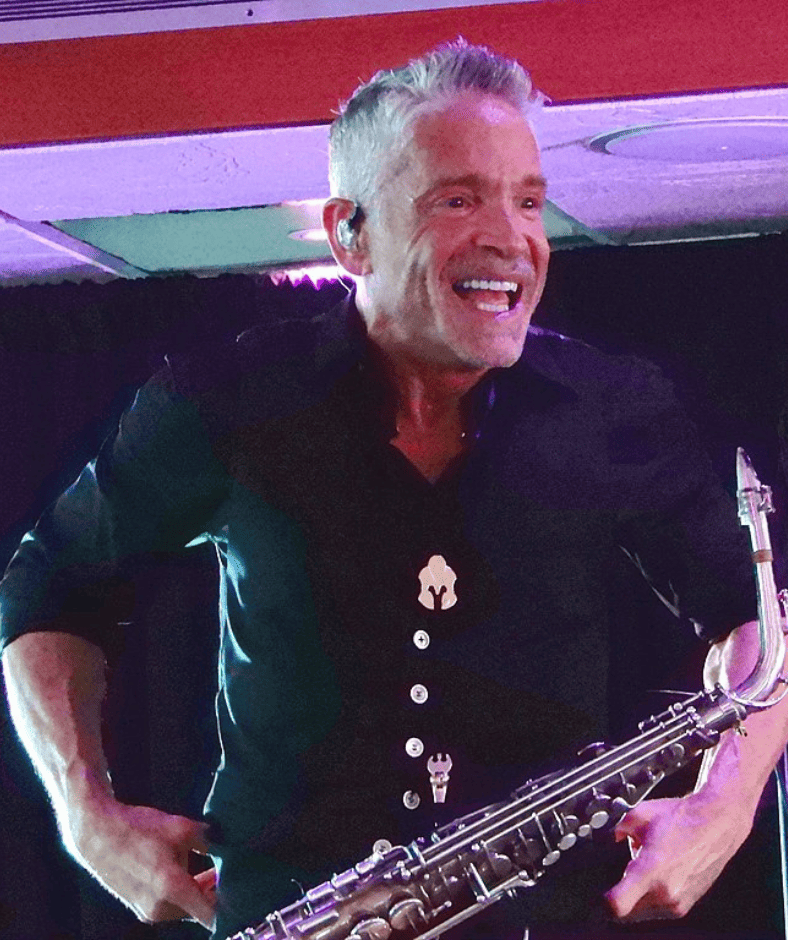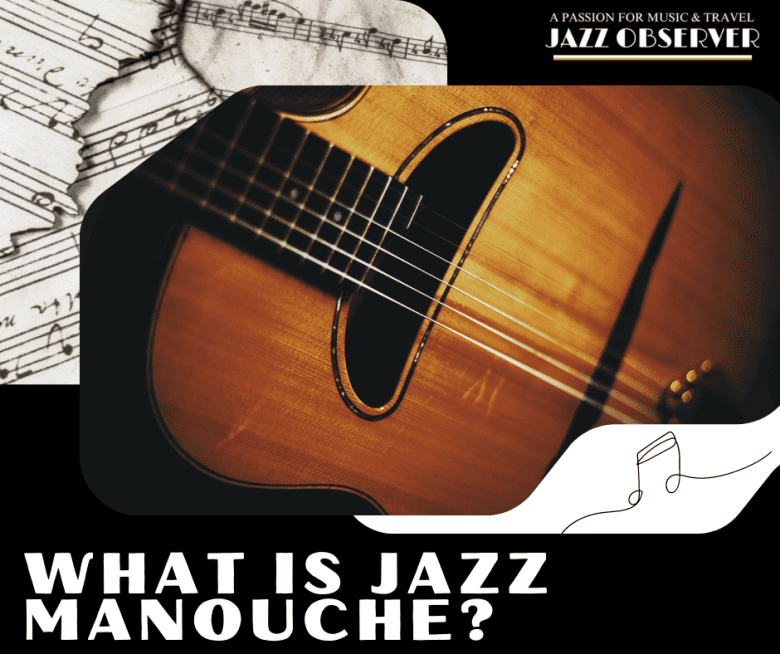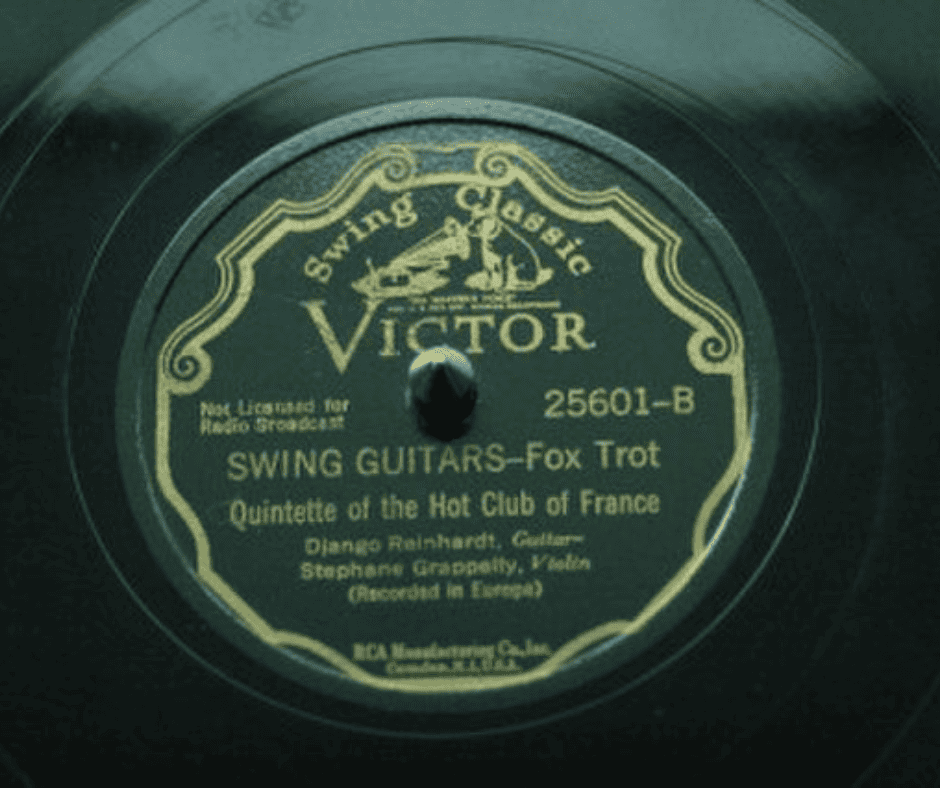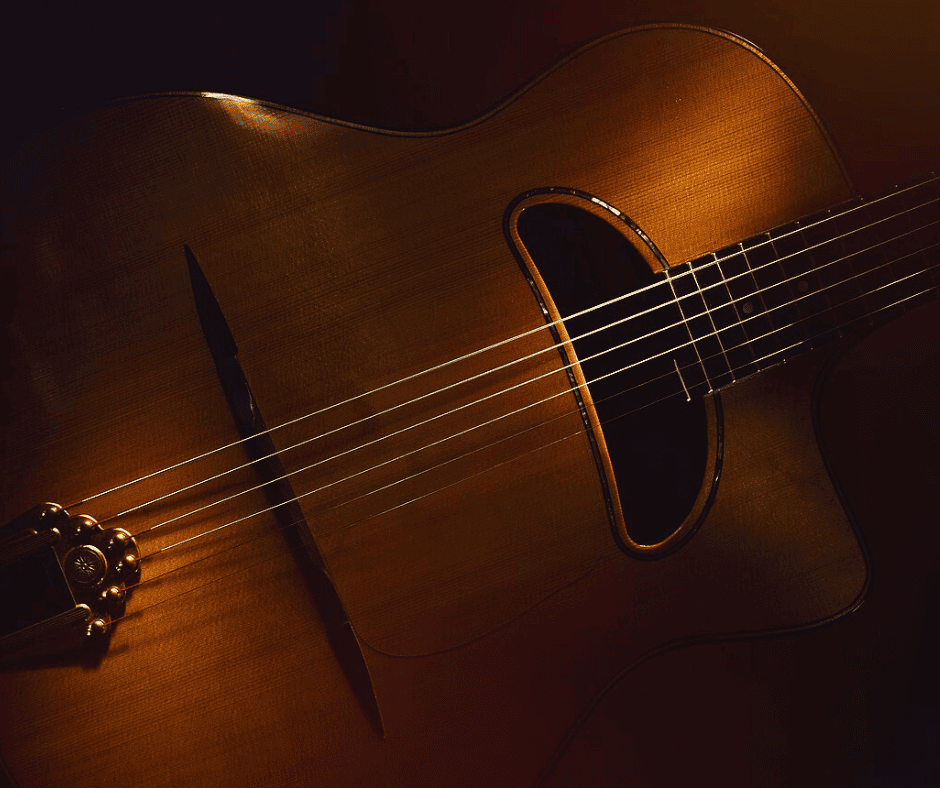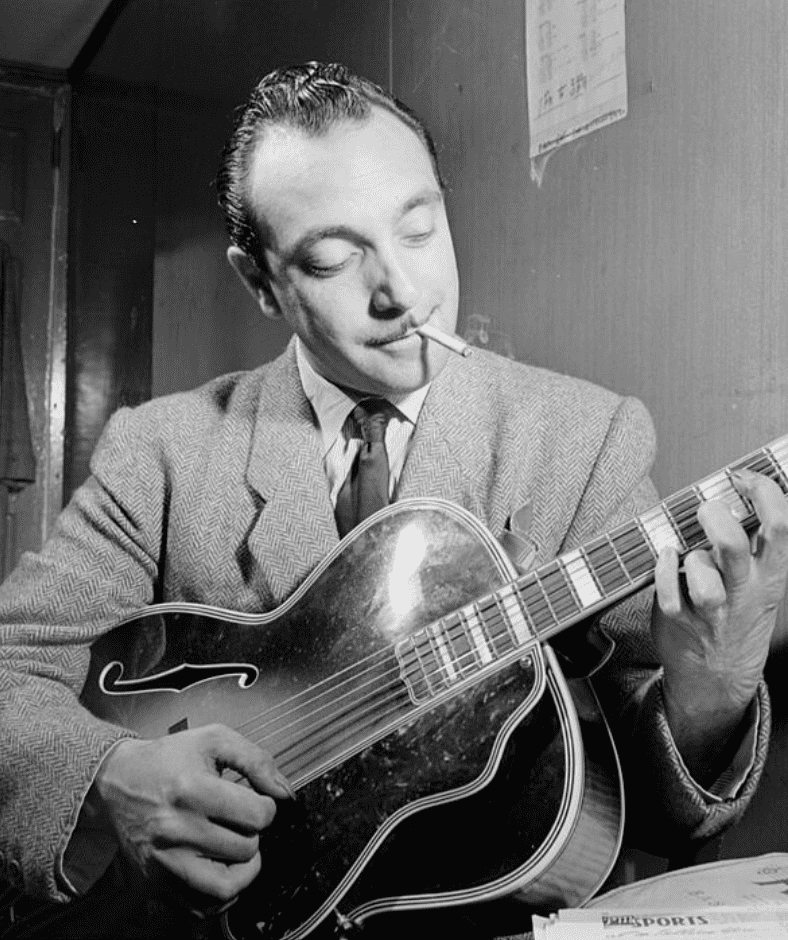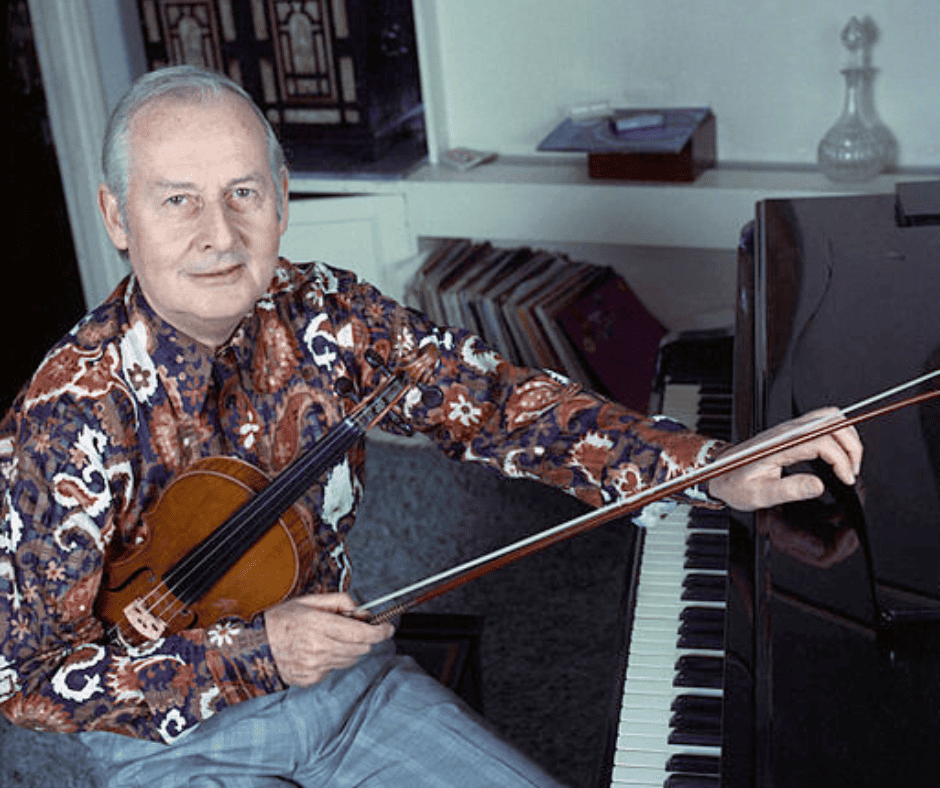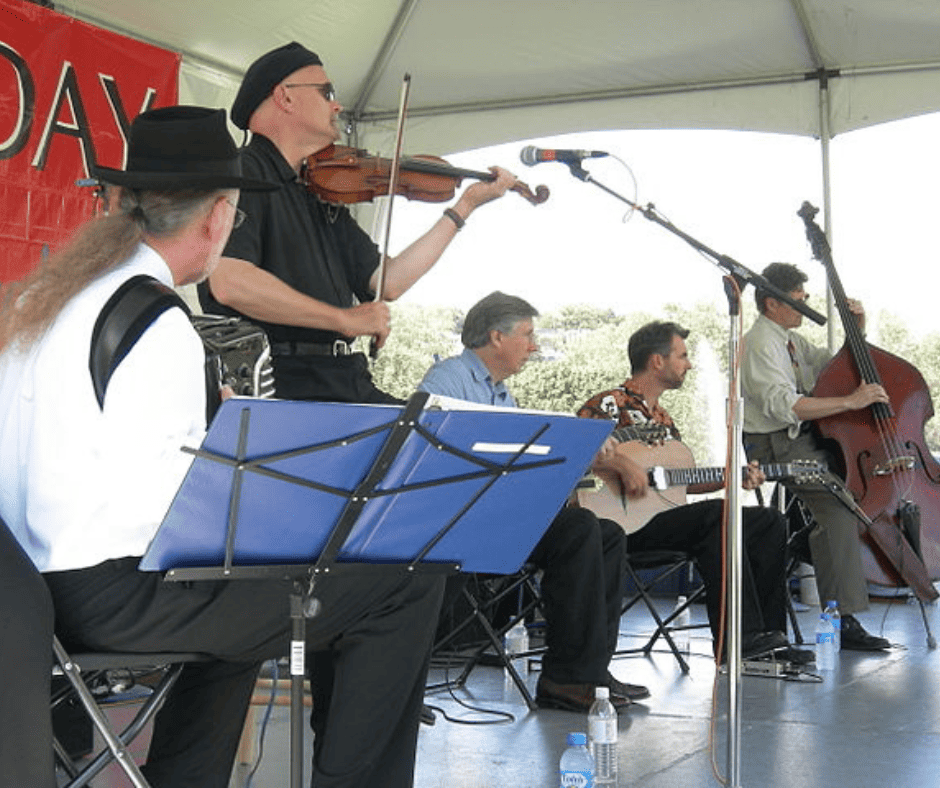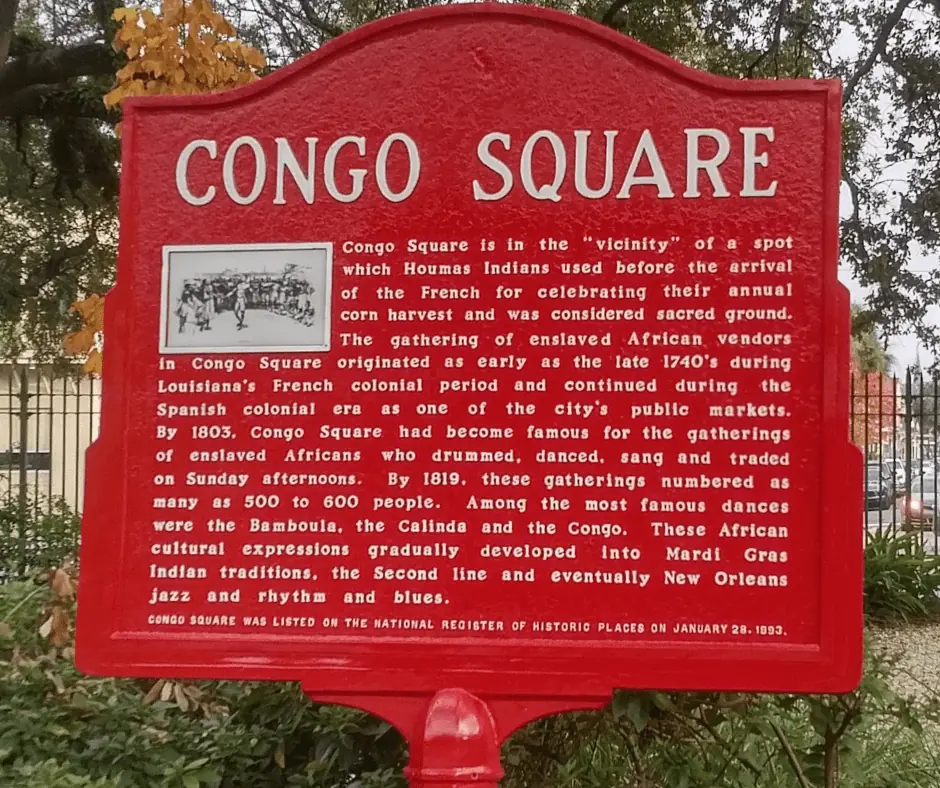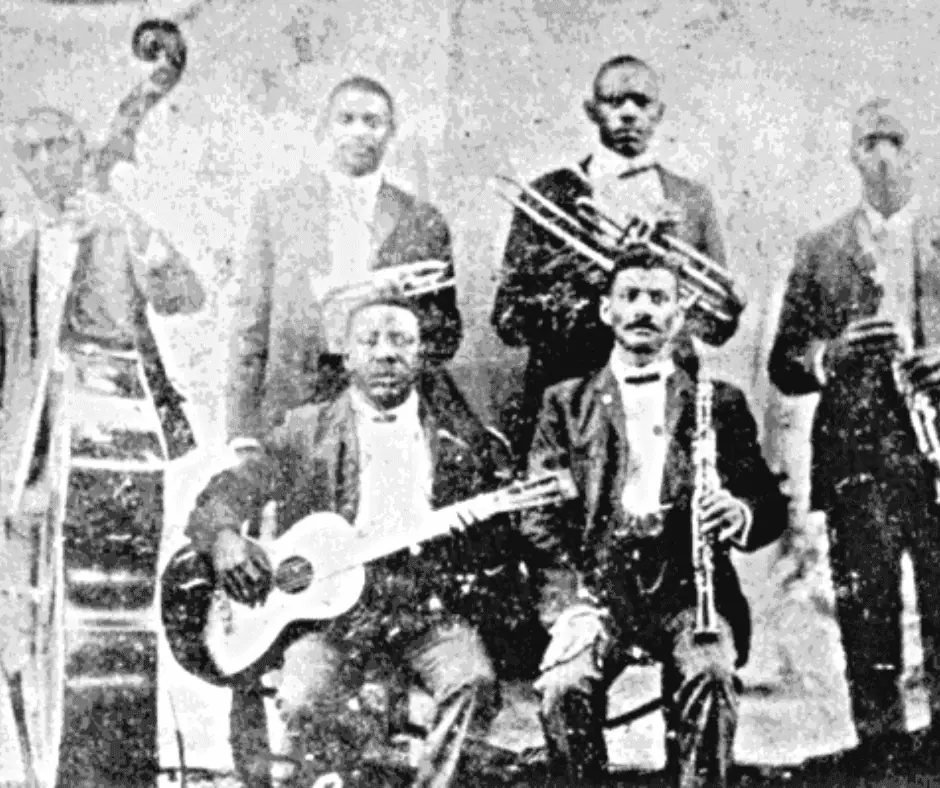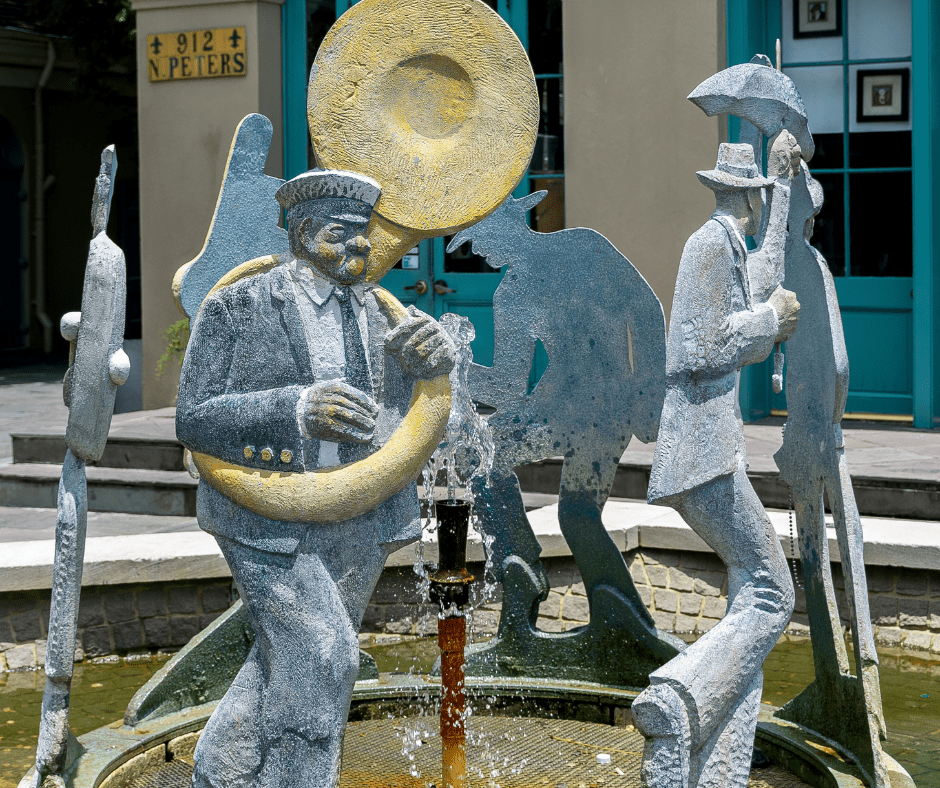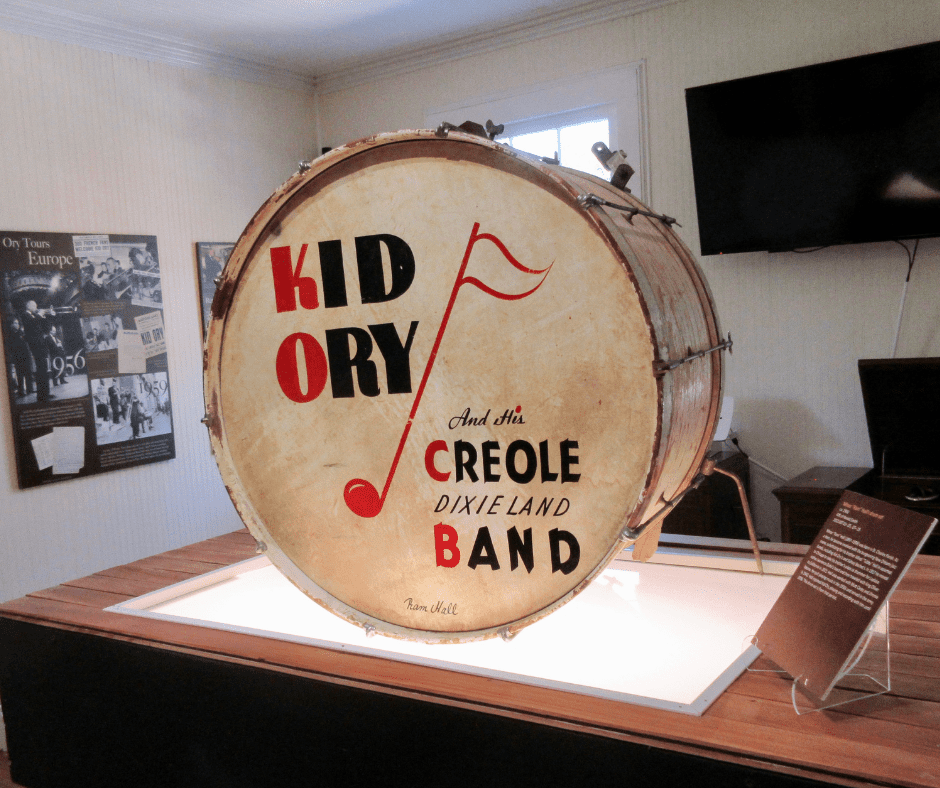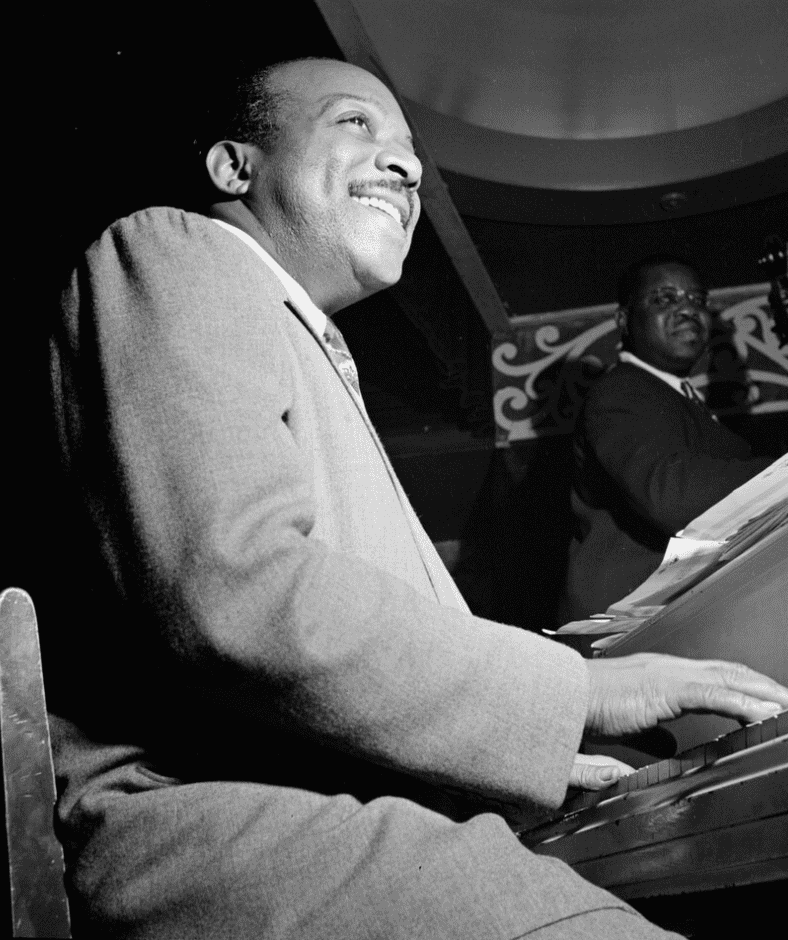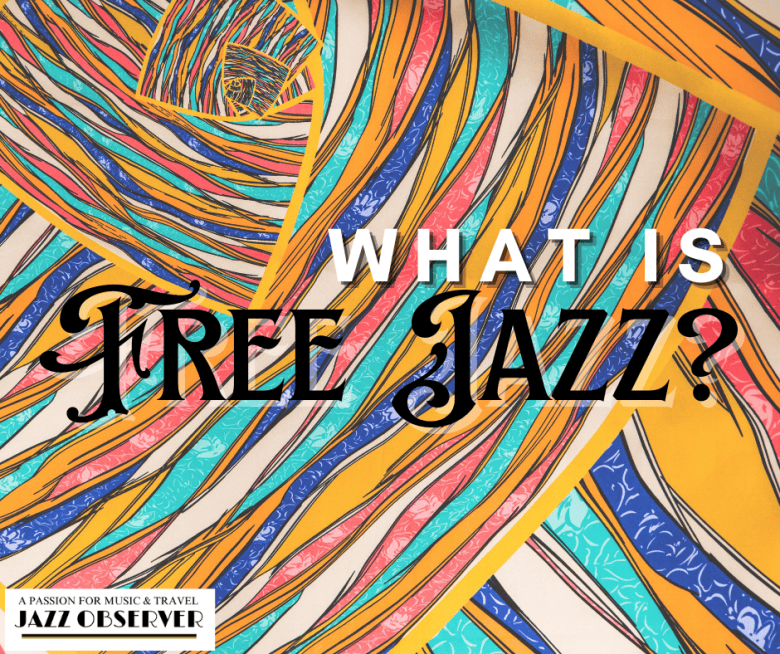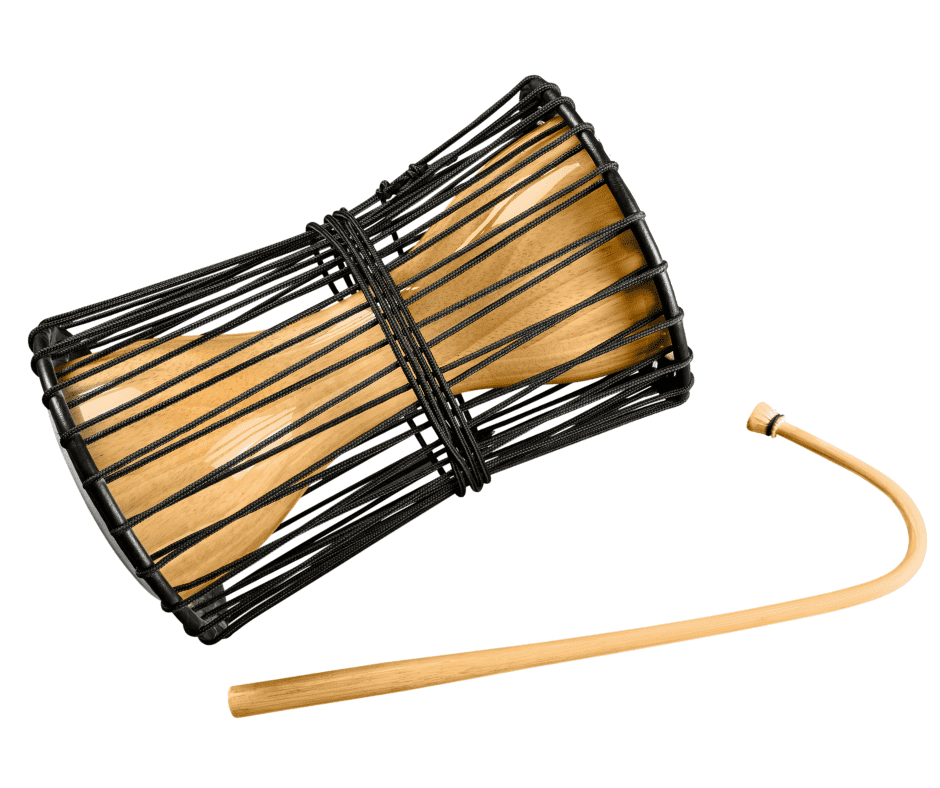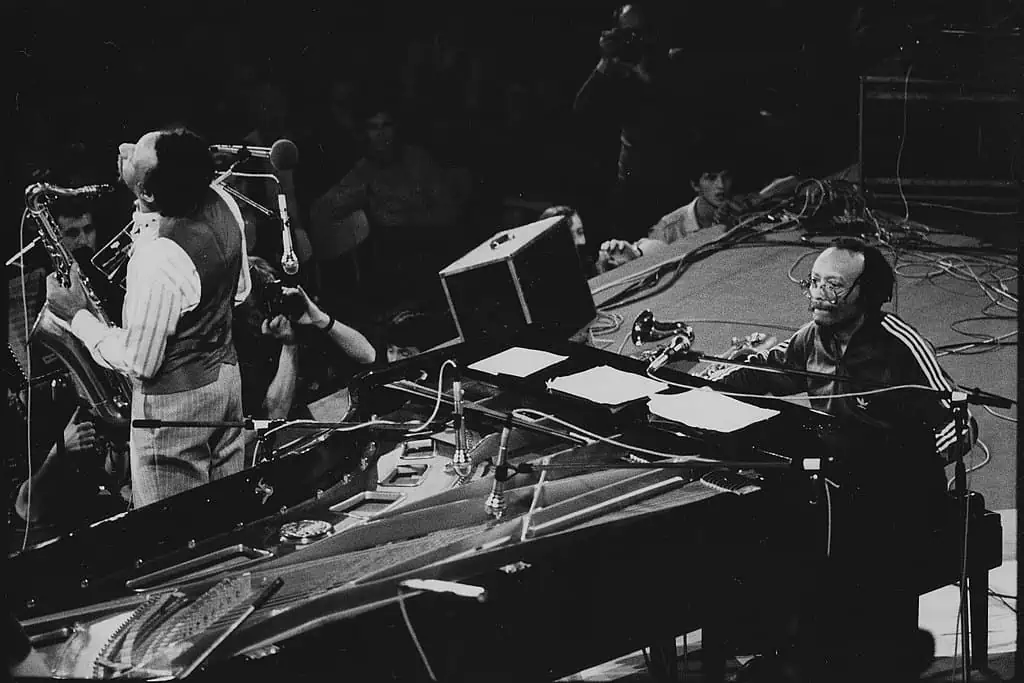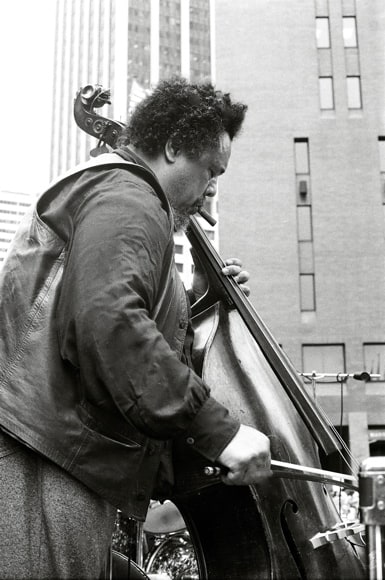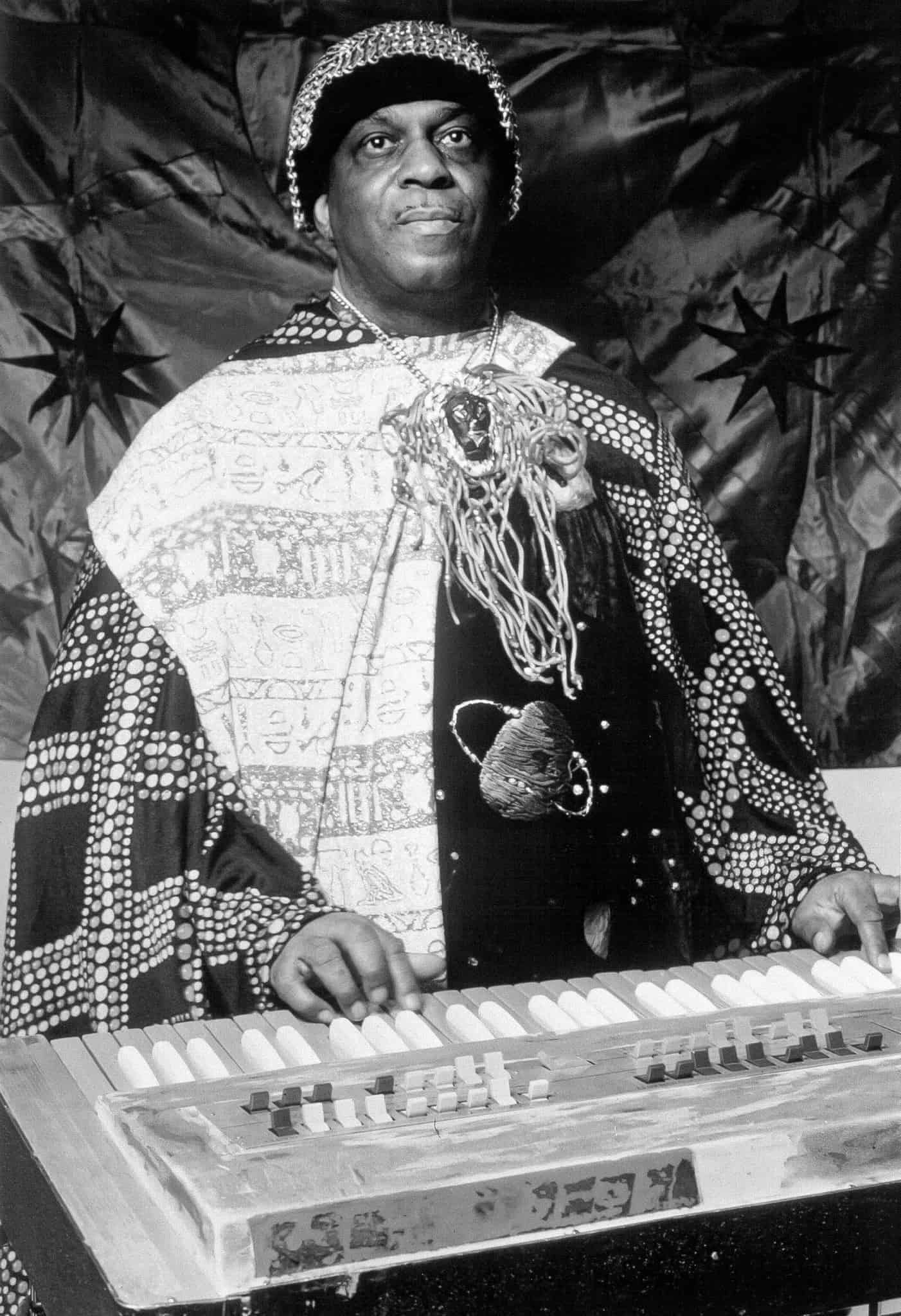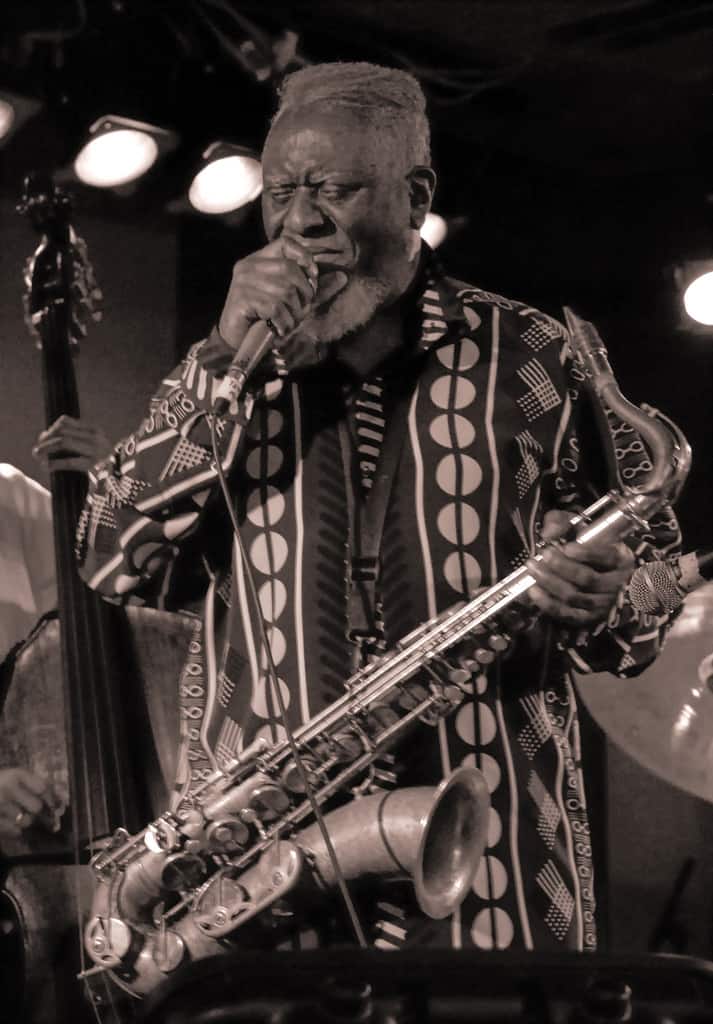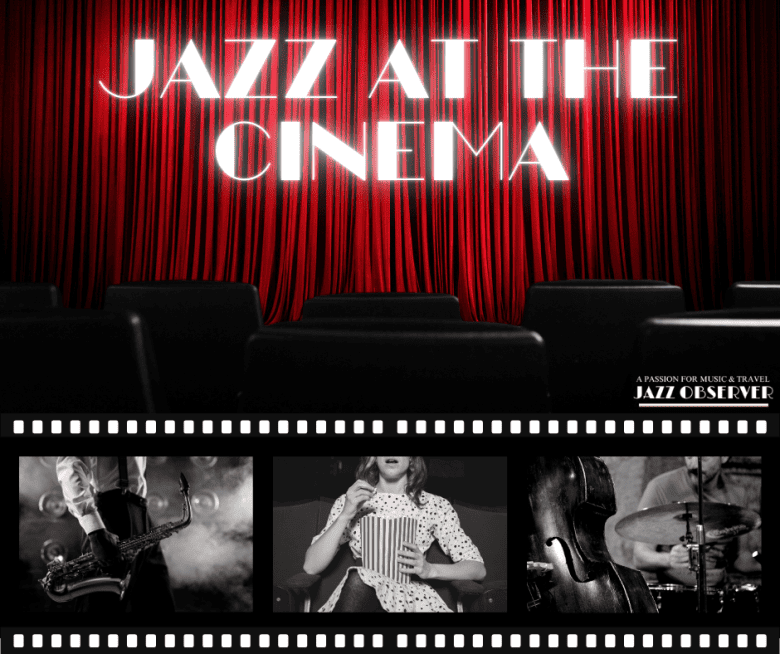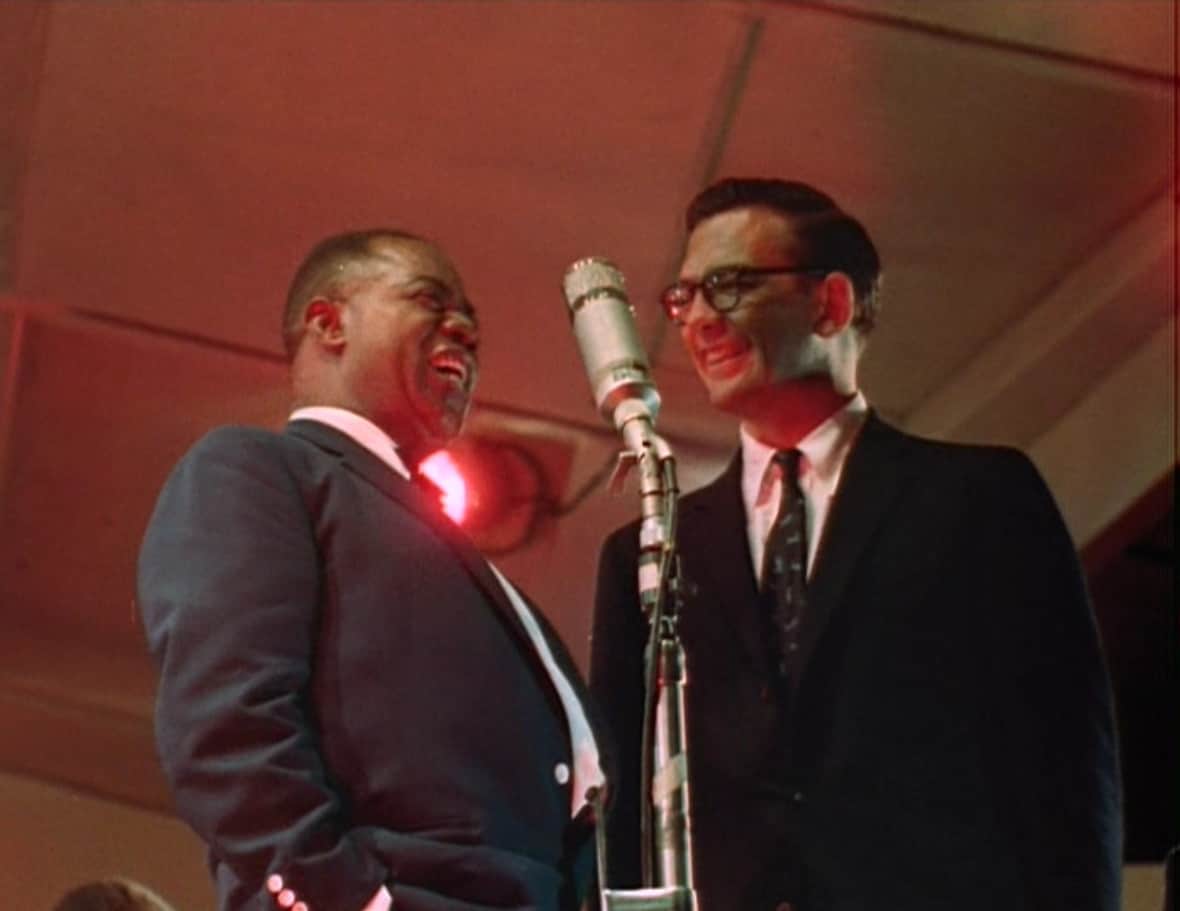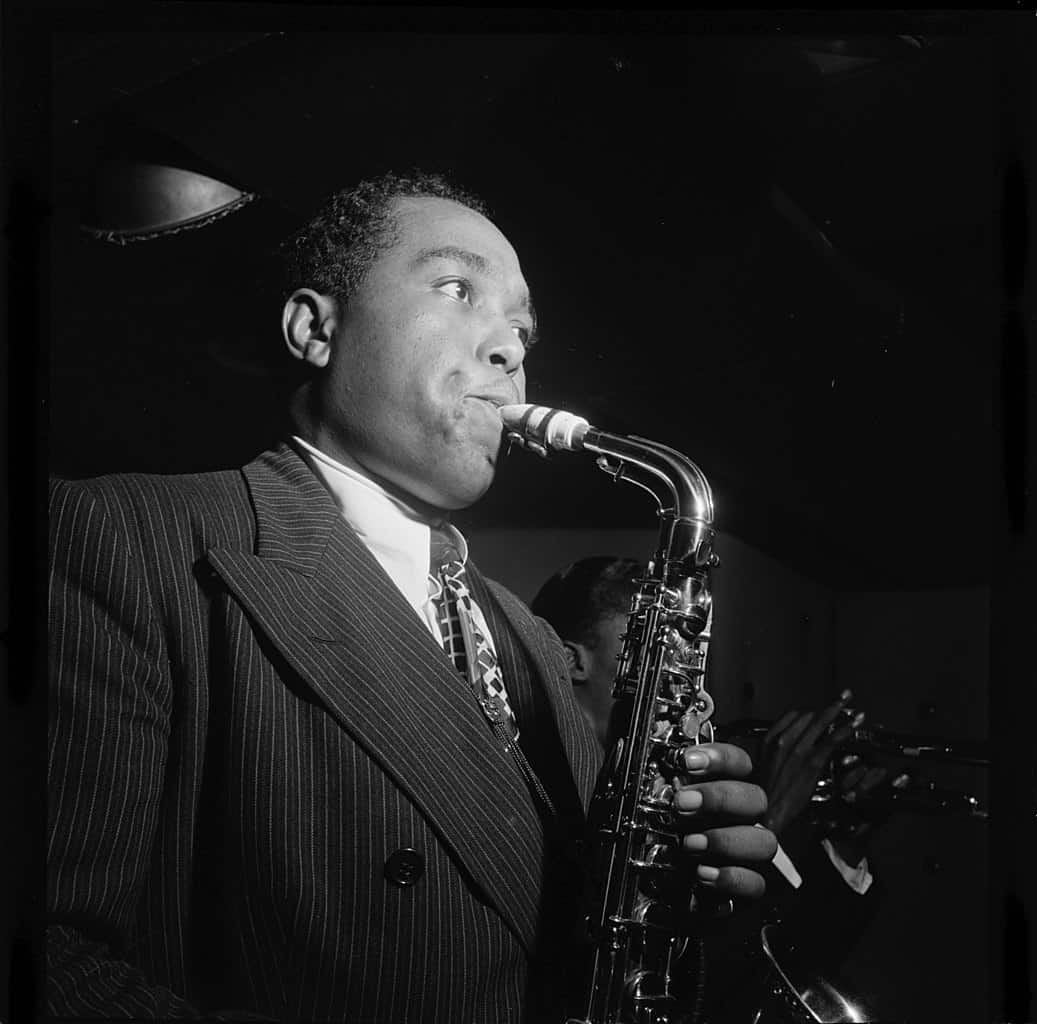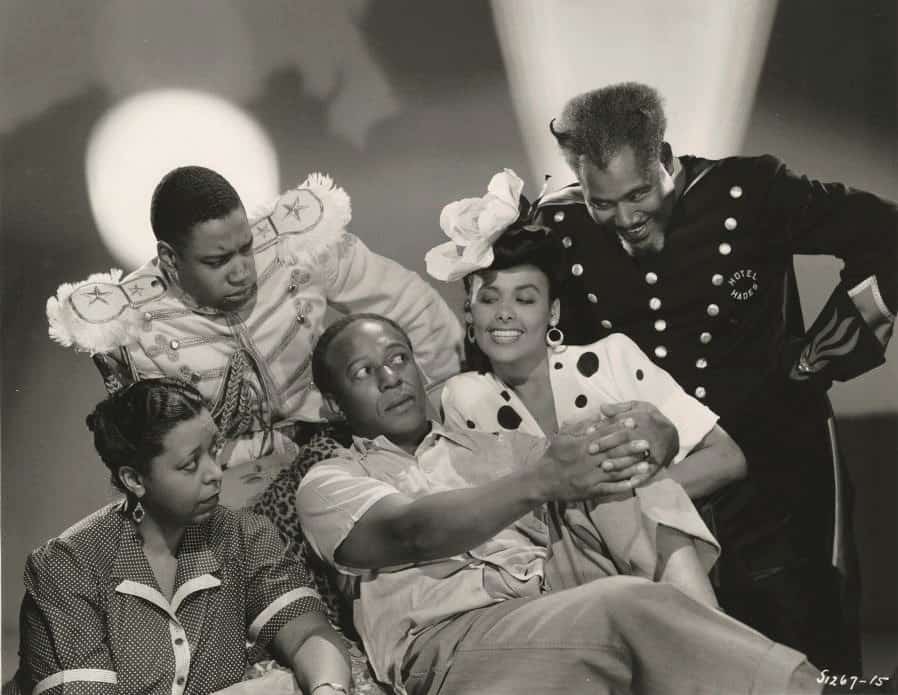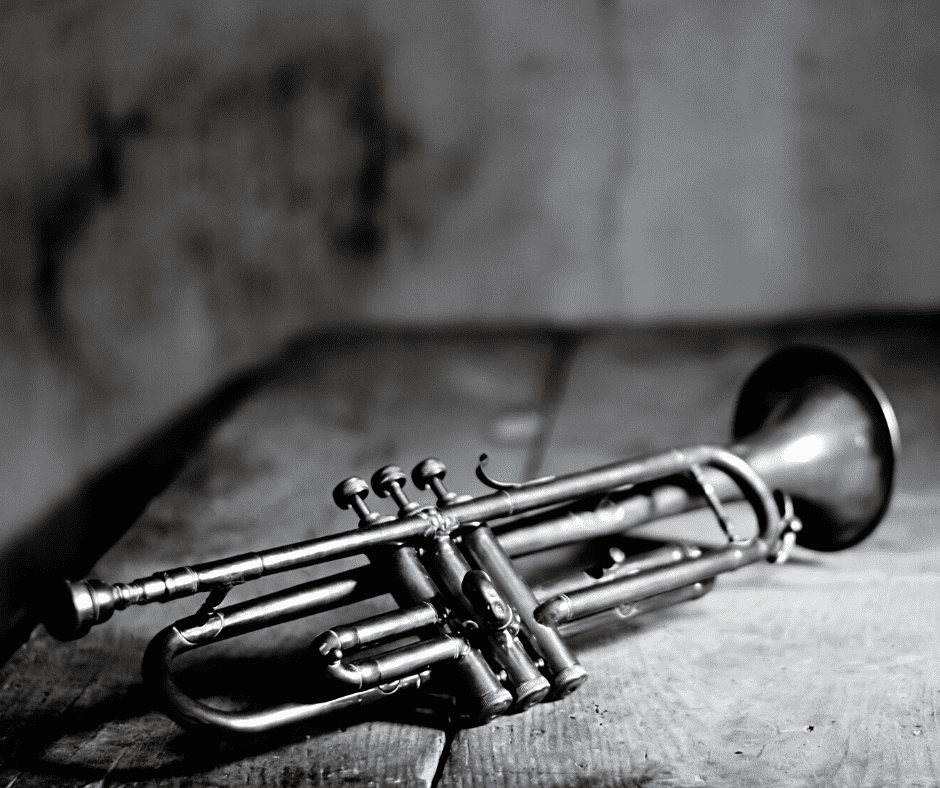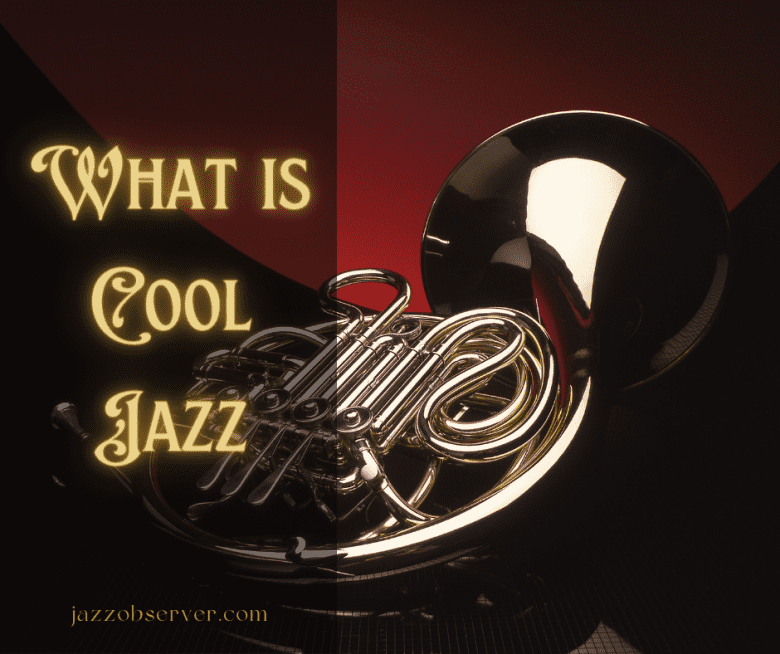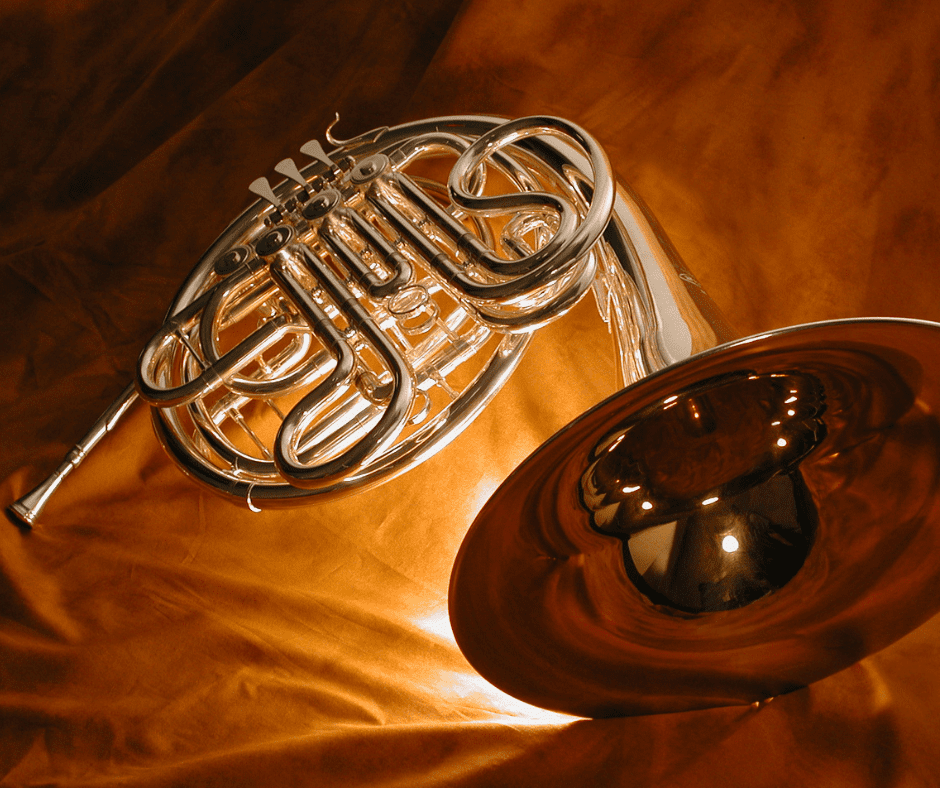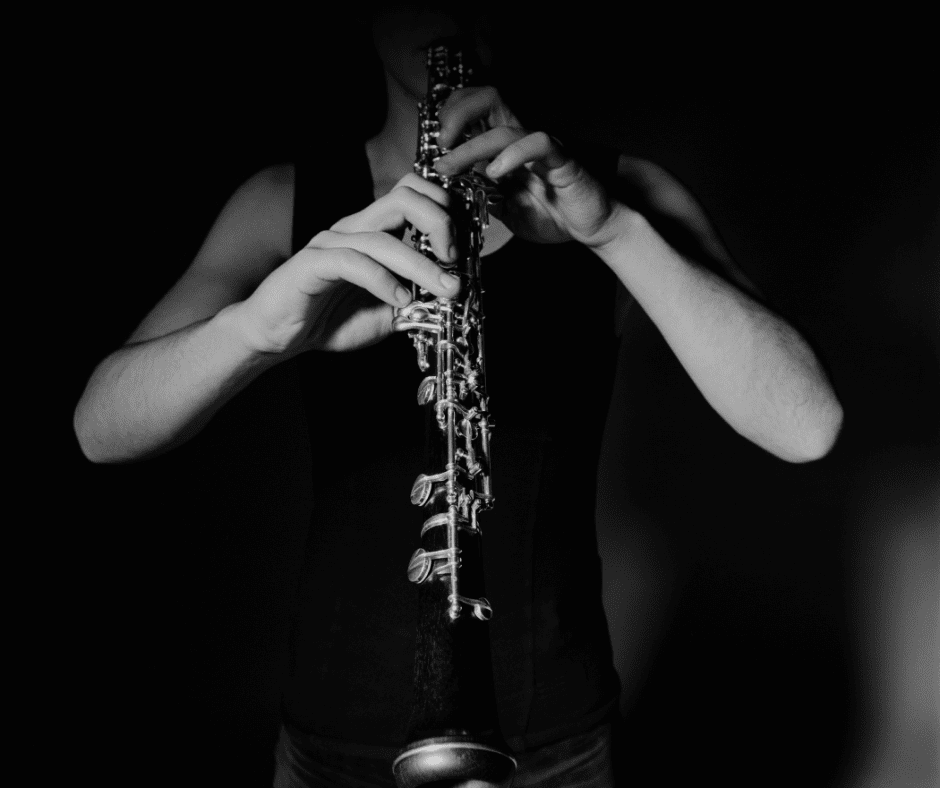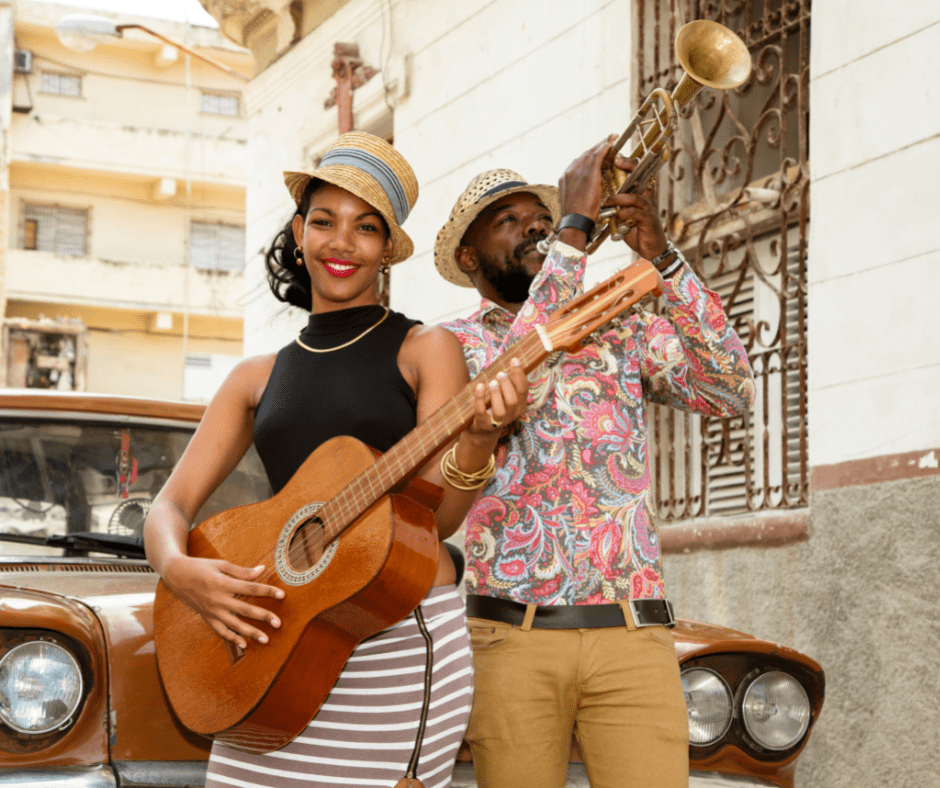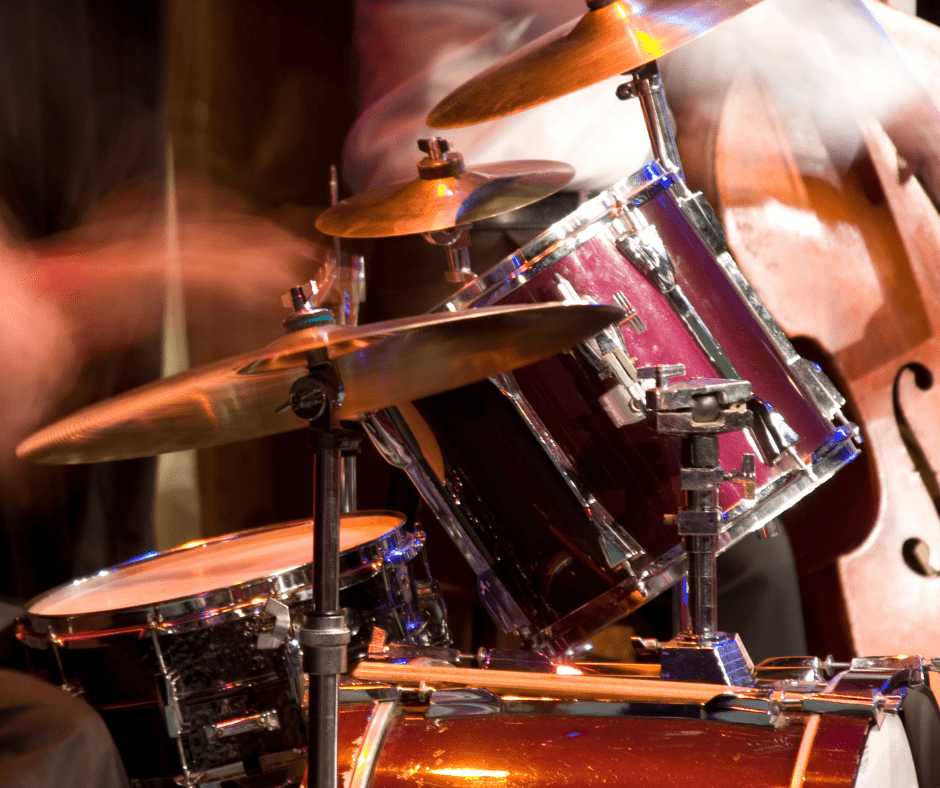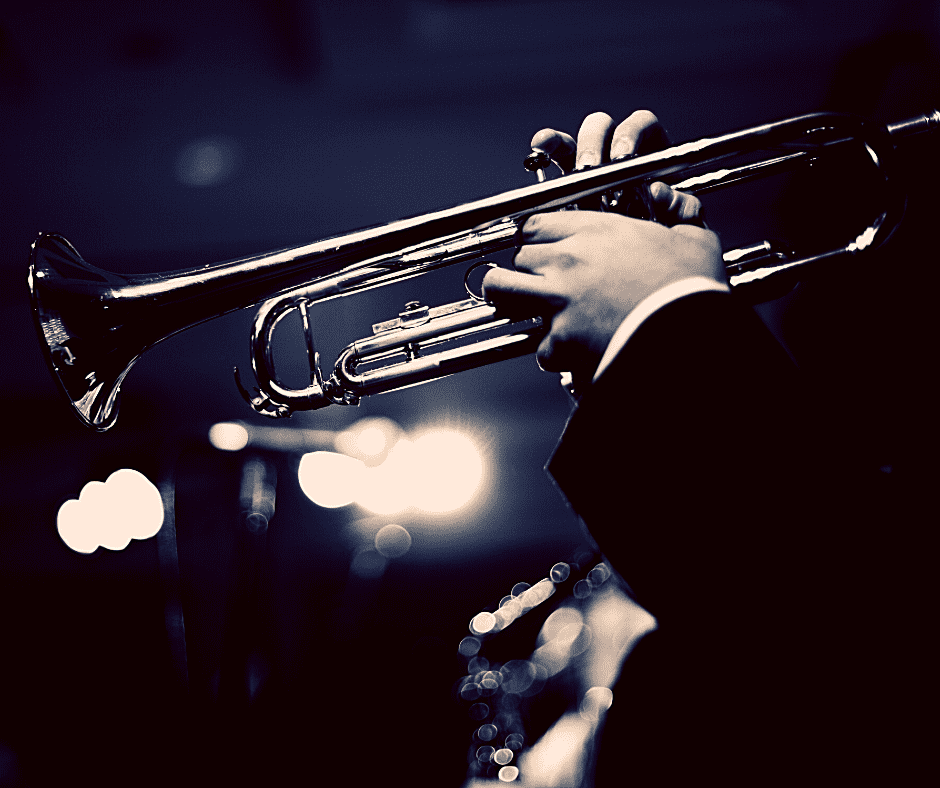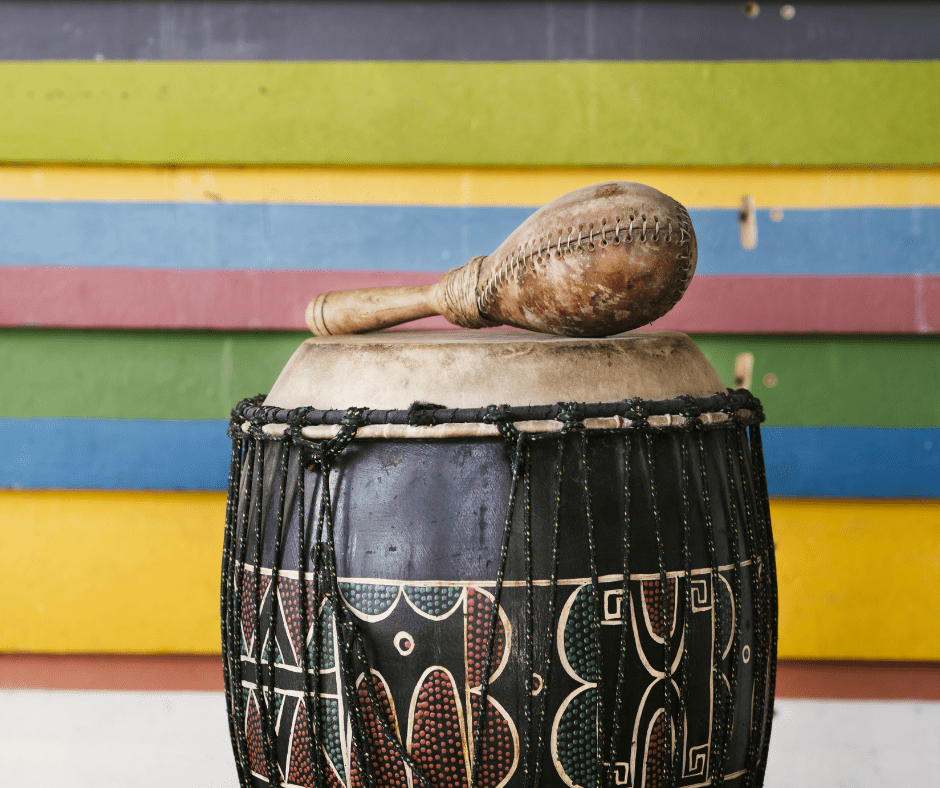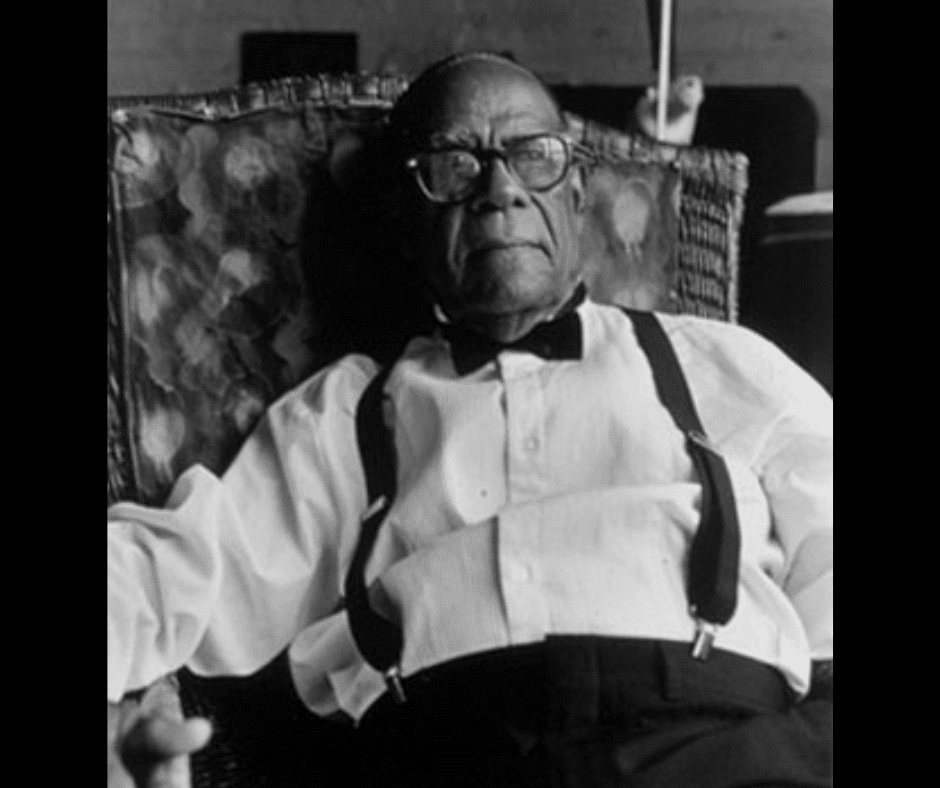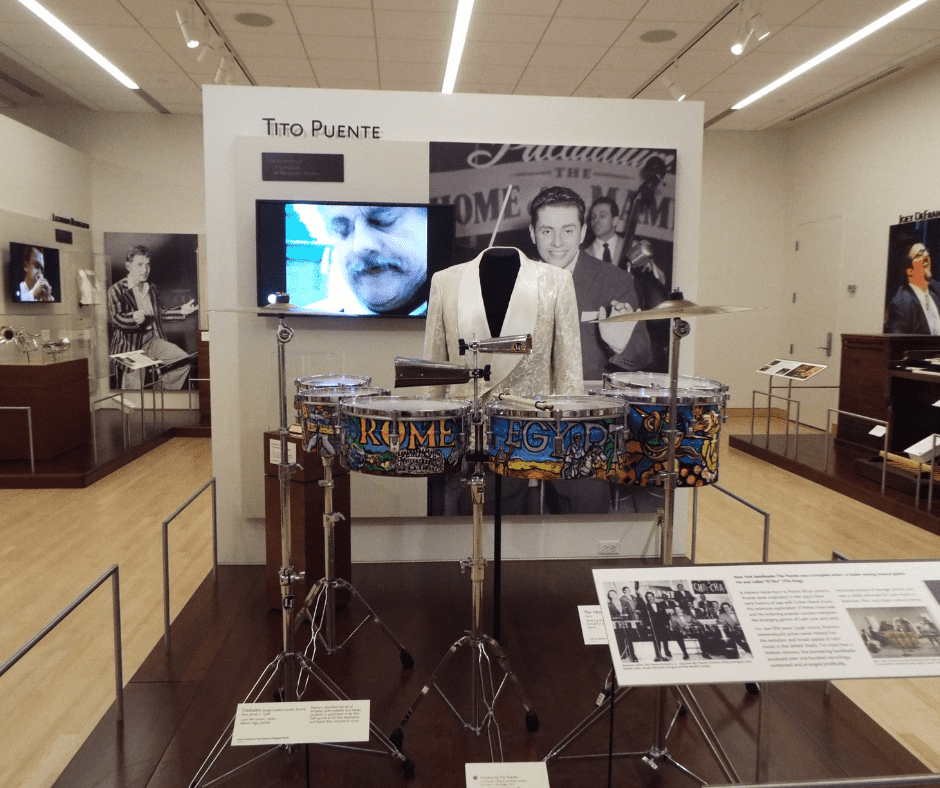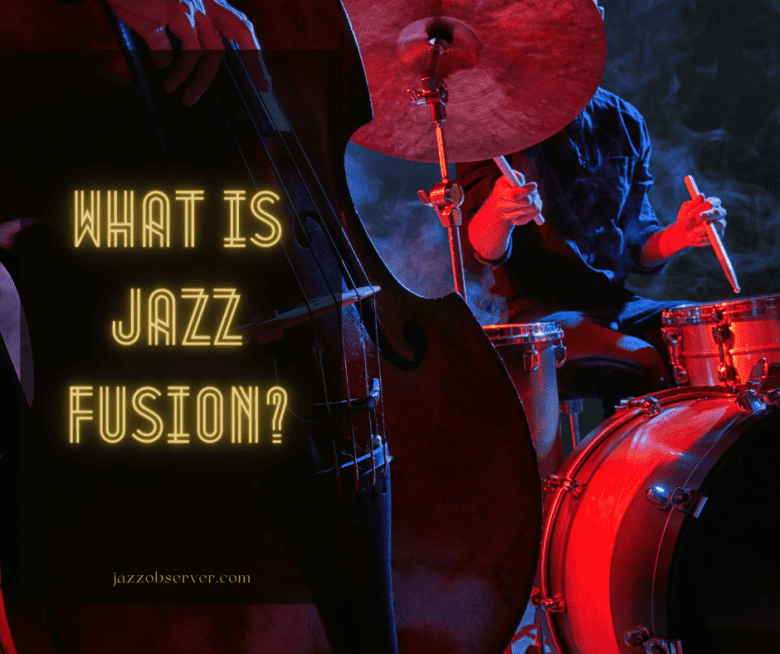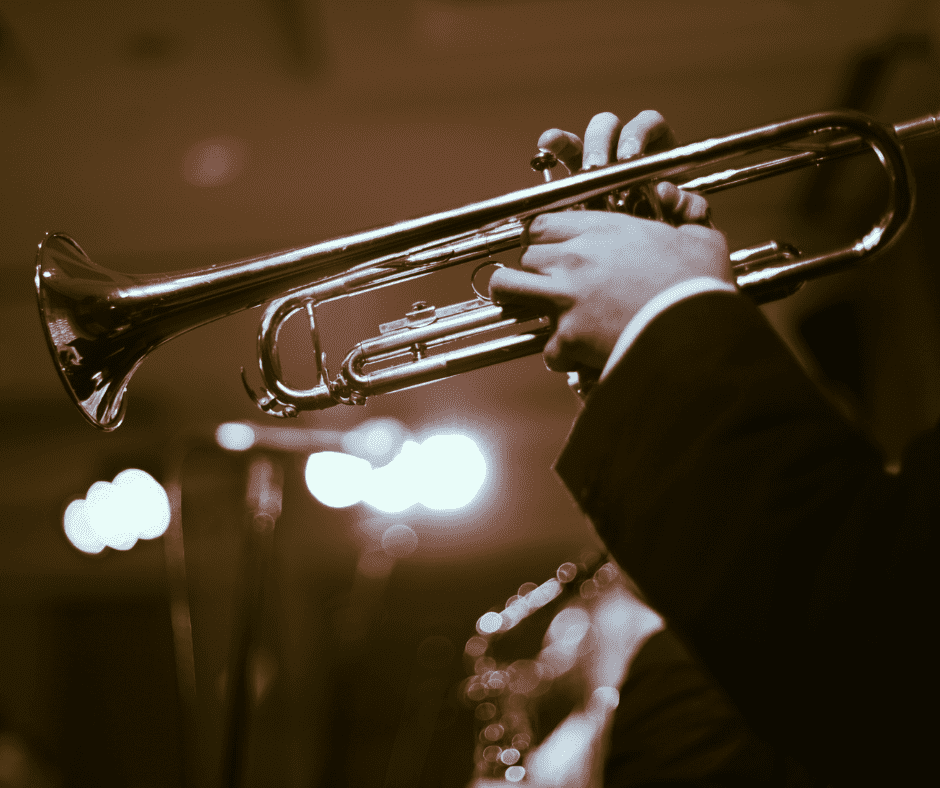When it comes down to it, the world of jazz music is surprisingly vast. There are dozens of subgenres, and while they can have features in common, they’re each distinct in their own way. That’s why many people are curious about swing vs. bebop jazz. Along with wanting to understand each subgenre on a deeper level, comparing the two helps their differences stand out, creating a greater level of appreciation for the unique style of each type of jazz music.
Seeing how swing vs. bebop jazz stand apart is often easier if you learn a bit about each subgenre before comparing. Here is an overview of what swing and bebop are, as well as the difference between swing and bebop.
What Is Swing?
Swing music – also called big band swing or big band jazz – rose to prominence during the late 1920s and reigned through the late 1940s, with swing declining in popularity after the end of World War II. During the swing era, swing was the most popular music style across the United States, allowing many musicians associated with the jazz genre to achieve stardom.
In some ways, swing was considered a dilution of the broader jazz tradition. Along with featuring larger groups of musicians – with numbers typically ranging between 12 and 20 – usually organized into sections based on instrument type. It also relied more heavily on written music, shifting a bit away from the highly improvisational nature of jazz.
Overall, swing music had significantly more structure, favoring predictable rhythms that worked well as dance music. This inherent degree of consistency didn’t align with many aspects of other forms of jazz, but it did make jazz far more mainstream due to its broader appeal. Plus, swing could include complex solos with a level of improvisation, though a cohesive sound across all instruments was still an aim.
Riffing was also a widely used trope in swing. Simple musical phrases were played either by the entire band or just one section. Often, counterpoints were then played, creating a hypnotic type of repetition.
What Are the Origins of Swing?
One of the earliest examples of this evolution involved the Fletcher Henderson Orchestra. It began featuring highly innovative arrangements for the time, integrating call-and-response segments between the woodwind and brass sections. Additionally, the group started imbuing their music with the rhythmic qualities typically found in ragtime, making the music highly danceable.
Louis Armstrong joined the Fletcher Henderson Orchestra in the mid-1920s. When he arrived, the band incorporated more emphasis on solos, another feature often associated with jazz music. Ultimately, the group began strongly influencing other bands, ushering the way for the swing era. Additionally, Louis Armstrong took his experience with the band back to the world of jazz, causing more blending from the other direction.
Famous Swing Musicians
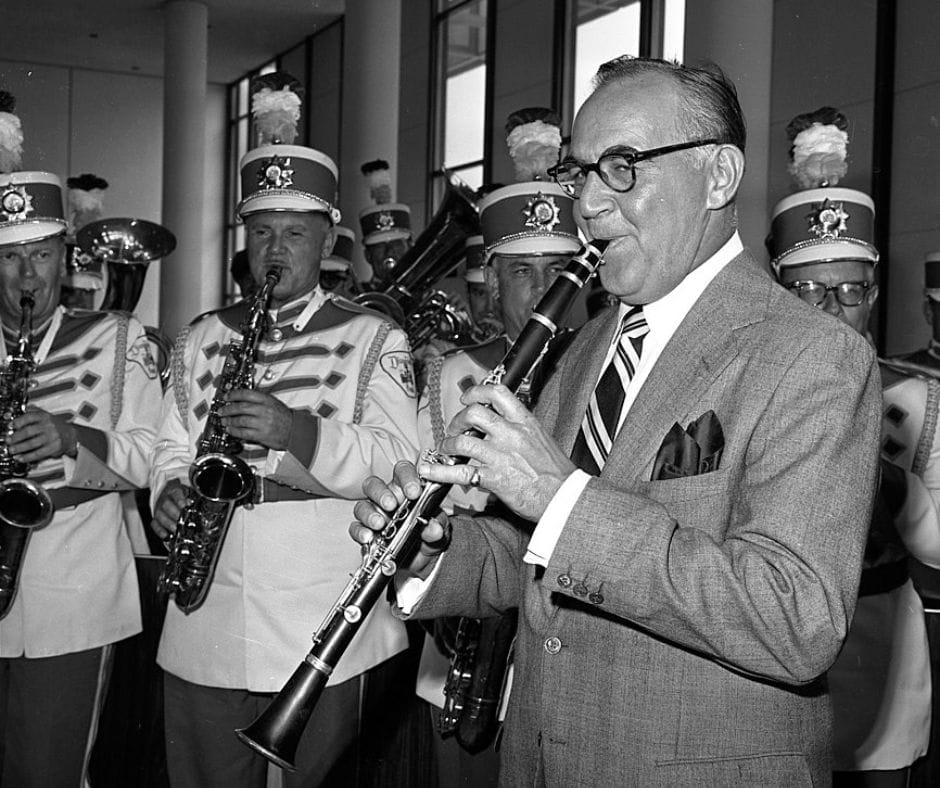
Several musicians paved the way for swing music. Many credit Fletcher Henderson with laying the groundwork for the subgenre. He partnered with Louis Armstrong and introduced more jazz-like qualities into orchestral dance music, allowing for more crossover between the two genres.
Duke Ellington is another highly influential composer and musician who made a name for himself during the swing era. He was significantly inspired by ragtime pianists, bringing that styling into his compositions and playing. Ultimately, he’s broadly considered one of the most influential band leaders of all time, particularly in the world of swing.
Another famous swing musician of note was Benny Goodman. While performing in the mid-1930s in Los Angeles, his jazz band concert caused an excited ground to start dancing. Not long after the show, Benny Goodman earned a solid reputation, with many calling him the “King of Swing.”
Breaking on to the scene as part of Count Basie’s Band, Lester Young made his mark on swing due to his unique approach to improvisation. It had a lightness that kept his music palatable while also diverging from some of the genre’s norms, causing him to stand out from the crowd.
The release of the movie “Swing Kids” in the early 1990s, starring prominent actors like Christian Bale, Robert Sean Leonard, and Frank Whaley, sparked a revival of swing music. The film’s energetic dance sequences and irresistible jazz soundtracks reignited the swing era’s spirit, leading to a reappearance of swing dance clubs and a renewed appreciation for the genre’s timeless appeal, ultimately cementing its enduring popularity in modern culture.
What Is Bebop Jazz?

The bebop era generally began in the 1940s, continued through the 1950s, and was initially deemed controversial. The jazz subgenre didn’t have mass appeal, as it was chromatic instead of diatonic. Rhythms were often broken up or disrupted, resulting in highly complex music.
Additionally, bebop incorporated a significant amount of unpredictability. Bebop musicians improvise regularly, and they typically weren’t required to adhere to a specific musical structure while playing, instead favoring virtuosity and personal expression over cohesion. Bebop melodies also featured an incredibly quick tempo while highly complicated chord progressions and harmonies.
Scat singing was also common in the genre and is generally where the subgenre got its name. The vocal approach involved imitating the sounds created by instrumental jazz solos, using nonsense syllables and improvisation to add unexpected vocal elements to a song.
What Are the Origins of Bebop?
Bebop developed in the early 1940s, and while it has its roots in swing, it’s a dramatic divergence from the subgenre. While swing was highly palatable to the masses, bebop was generally considered “musicians’ music.” Essentially, it wasn’t concerned with marketability, instead favoring the ability of musicians to create music they wanted to make regardless of commercial appeal. Danceability also wasn’t part of the equation.
Additionally, the rise of bebop music was partially a response to cabaret laws emerging during that period. For example, cabaret taxes were levied against clubs where music led to dancing, and venues that only played instrumental music and didn’t permit dancing were exempt from that type of taxation. As a result, swing became harder to support, creating space for bebop jazz to gain greater traction.
Famous Bebop Musicians
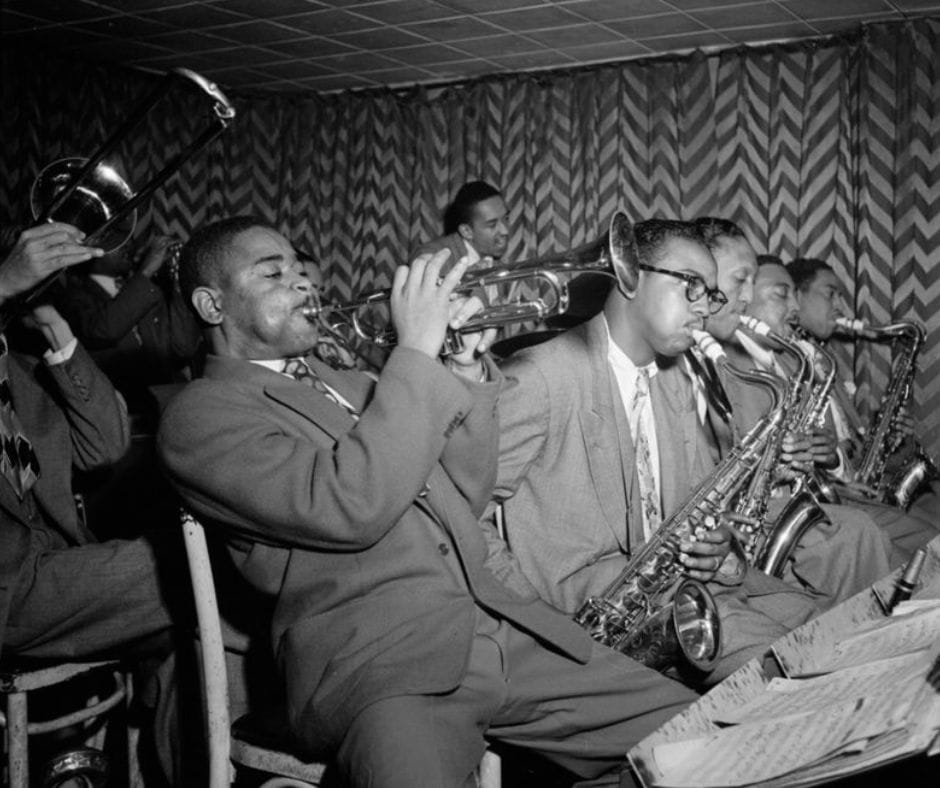
When it comes to the bebop style, several musicians gained significant renown. Charlie Parker – an exceptional saxophonist – is largely considered a pioneer of the subgenre. He favored highly complex music with a sense of intricacy coupled with a touch of jitteriness, making his compositions excellent examples of the genre.
Dizzy Gillespie is another famed bebop musician who is also credited as being a creator of the genre. His unconventional, boundary-pushing style functionally redefined what jazz could be, causing him to become a legend within not just bebop but jazz music as a whole.
Widely recognized as an innovator, John Coltrane is another composer and saxophonist considered a prime example of bebop. He often created highly experimental music that explored the edges of the world of jazz, and he’s broadly considered one of the most talented musicians of all time.
Swing vs. Bebop Jazz: What’s the Difference?
When exploring the difference between swing and bebop, a few key aspects allow the two genres to stand apart. Here’s an overview of how swing vs. bebop jazz differ.
Rhythmic Predictability
First, while swing was highly rhythmic, bebop usually left room for greater improvisation. Swing has a degree of predictability, so while it can support solos, any improvisation must align with the rest of the song. Bebop was far more frantic, often featuring unconventional structures and complex time signatures. As a result, bebop, as more freeform, allowed for more space for improvisation.
Danceability
Another key difference between bebop and swing was danceability. While swing is a bit slower, it’s also less frenetic. The reliable rhythms in swing make it easy to groove to, causing it to be highly danceable. In comparison, bebop is highly unpredictable, and it’s not uncommon for bebop to feature rhythms that don’t repeat across the song. As a result, dancing to bebop music is challenging, if not seemingly impossible.
Vocals
Scat singing is another feature that distinguishes bebop from swing. Vocals in swing generally lean toward the melodic, allowing them to mesh with the rest of the music. Bebop regularly featured scat singing, which wasn’t necessarily about cohesion with what was being played. Additionally, since scat uses nonsense lyrics, live shows could feature an array of unpredictable sounds. While scat is meant to mimic what instruments sound like, how a vocalist achieved that could vary from one performance to the next, creating even more irregularities.
Marketability
Bebop also differs from swing music in that bebop wasn’t concerned about marketability, while broad appeal was a common goal with swing. As mentioned above, bebop was considered “musicians’ music,” favoring exploration, innovation, intricate melodies, and self-expression above all else. While swing also made room for those traits, its overall palatability and mass appeal remained part of the equation, effectively shaping where the music did or didn’t go.
Ensemble Size
Finally, bebop shifted away from the big band approach commonly associated with swing. While swing ensembles often featured over a dozen musicians, bebop groups were frequently far smaller. Along with altering the overall sound, this made bebop more practical in smaller venues, as big bands wouldn’t always fit comfortably in anything but large performance halls.
Looking to discover more? How about Free Jazz, with its avant-garde allure, while the lightning-fast tempo of Latin Jazz? These genres hold fascinating stories waiting to be explored.

